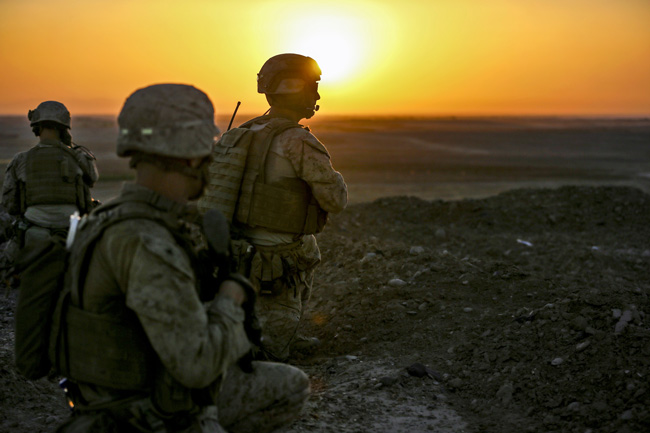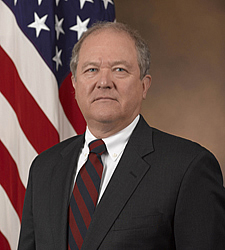
(Cpl. John A. Martinez Jr.)
The following is part of the latest report of the Special Inspector General for Afghanistan Reconstructions:
Adjusted for inflation, U.S. appropriations for the reconstruction of Afghanistan exceed the funds committed to the Marshall Plan, the U.S. aid program that delivered billions of dollars between 1948 and 1952 to help 16 European countries recover in the aftermath of World War II.
Named for its author, Secretary of State and former Army general George C. Marshall, the plan has been called “one of the most successful long-term projects in American foreign policy.” A Congressional Research Service report says the Marshall Plan delivered about $13.3 billion to its aid recipients before disbursements ended in June 1952. The United Kingdom was the lead recipient, with $3.2 billion.
Those nominal-dollar amounts are dwarfed by the $104 billion Congress appropriated for Afghanistan reconstruction between fiscal years 2002 and 2014—until adjustment is made for the effects of inflation since 1948. (The U.S. figures do not include billions more contributed by European and other powers over the years.) Comparison requires the adjustment: a dollar in 1950, for example, had roughly the purchasing power of 10 dollars in 2014.
Applying the year-end GDP Price Deflator from the U.S. Commerce Department’s Bureau of Economic Analysis to the streams of funding of both the Marshall Plan and Afghan reconstruction yields this result: “real” or inflation-adjusted Afghan reconstruction appropriations amount to more than $109 billion, versus an adjusted total of $103.4 billion for the Marshall Plan.13 SIGAR’s calculations also indicate that the real value of Marshall Plan aid to the United Kingdom—about $24.7 billion in today’s dollars—is less than a quarter of the funds appropriated through FY 2014 for Afghanistan reconstruction.

Other notable findings in the report: U.S. FY 2014 appropriations for Afghan reconstruction are $7.5 billion—by coincidence, almost the same as Afghanistan’s current national budget of $7.6 billion.
Even if the Afghan government dedicated all of its domestic revenue toward sustaining the Afghan army and police, it still could only pay for about a third of the associated costs. All other costs—those required to pay civil servants and to operate and maintain roads, schools, hospitals, and other non-military infrastructure and programs—would have to be funded by international donors or abandoned, an unwise decision even if it were possible.
It is questionable whether the Afghan government can sustain many nonsecurity reconstruction programs in such sectors as health, education, and economic development. Built into many projects are requirements for parts and fuel that the Afghans cannot afford and technical skills that Afghan ministries cannot supply. Because of this, U.S.-built schools and health facilities often cannot be staffed or supplied. Moreover, some facilities have fallen into disrepair; others are unsafe, incomplete, or unsuited for their intended purposes.
“Despite the drawdown of U.S. and Coalition forces [from Afghanistan], our mission there is far from over. With almost $18 billion appropriated but not yet spent in the pipeline, and probably another $6 to $10 billion promised annually for years to come, Afghanistan reconstruction should still be relevant to every U.S. taxpayer and policy maker.”— Special Inspector General John F. Sopko.
The executive summary of the latest quarterly report is below. The full report is available here. Archived reports are here.
![]()
Download Special Inspector General for Afghanistan Reconstruction, July 2014





























Kathy says
What people don’t know is that half of was used to pay US private corporations like Halliburton and a big chunk was stolen.
Jack Howell says
There are no winners in this war except for the defense contractors and of course KBR, Halliburton and all of the stockholders. It would be interesting to see how many member of congress and senate hold stocks in these corporations!
snapperhead says
Mission Accomplished!
nomad says
But isn’t the govt getting some of it back? Why else would US soldiers guard Afghan poppy fields? Oh, never mind, they guarding the stuff for big pharma to keep Americans drugged up and disengaged.
Under US Occupation, Afghan Opium Industry Surges to Record Levels. ‘This has never been witnessed before in the history of Afghanistan’
http://www.commondreams.org/news/2013/11/13/under-us-occupation-afghan-opium-industry-surges-record-levels
See photos of US military guarding Afghan poppy fields here:
http://www.globalresearch.ca/drug-war-american-troops-are-protecting-afghan-opium-u-s-occupation-leads-to-all-time-high-heroin-production/5358053